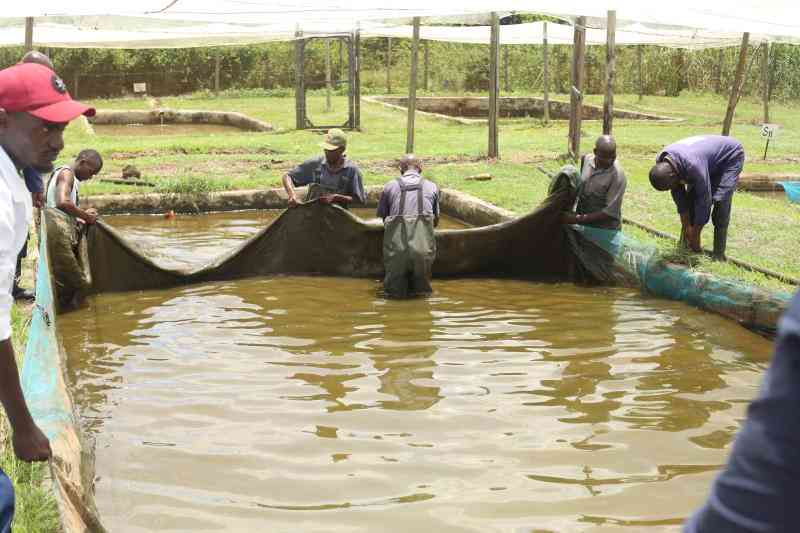×
The Standard e-Paper
Smart Minds Choose Us

Staff at Kenya Marine and Fisheries Research Institute (Kmfri) in Sagana, Kirinyaga County use nets in a pond to harvest tilapia fish brooders, April 3, 2024. [Mose Sammy, Standard]
In the last 10 years, aquaculture has become a popular venture for farmers across the country seeking to diversify their revenue streams.